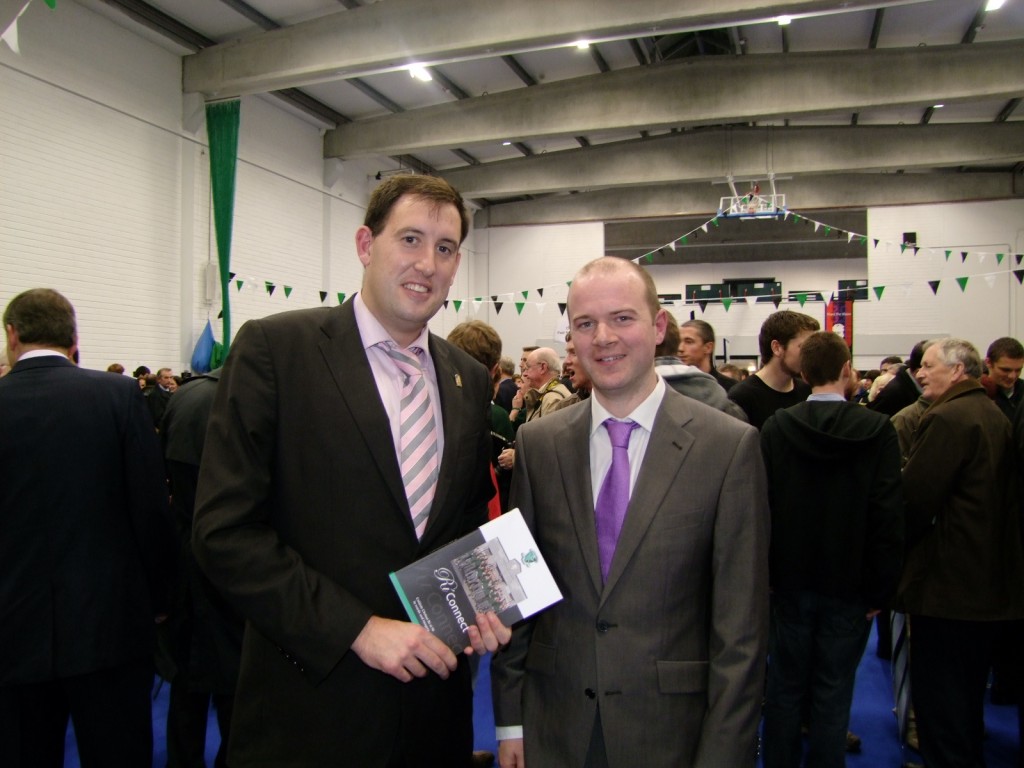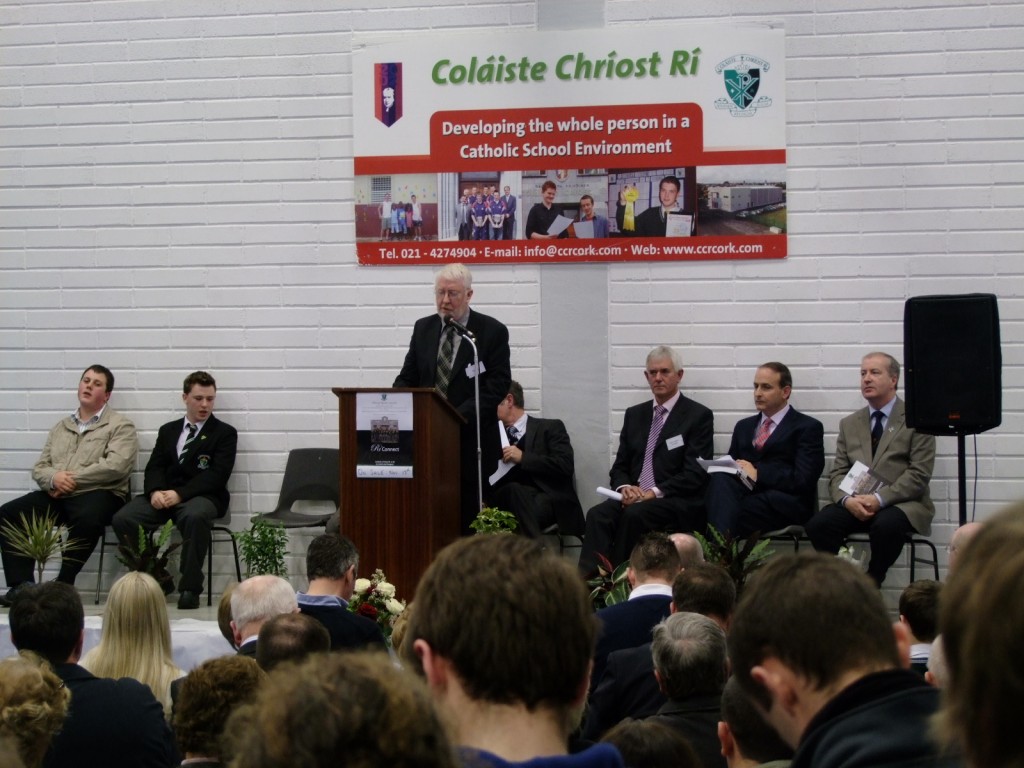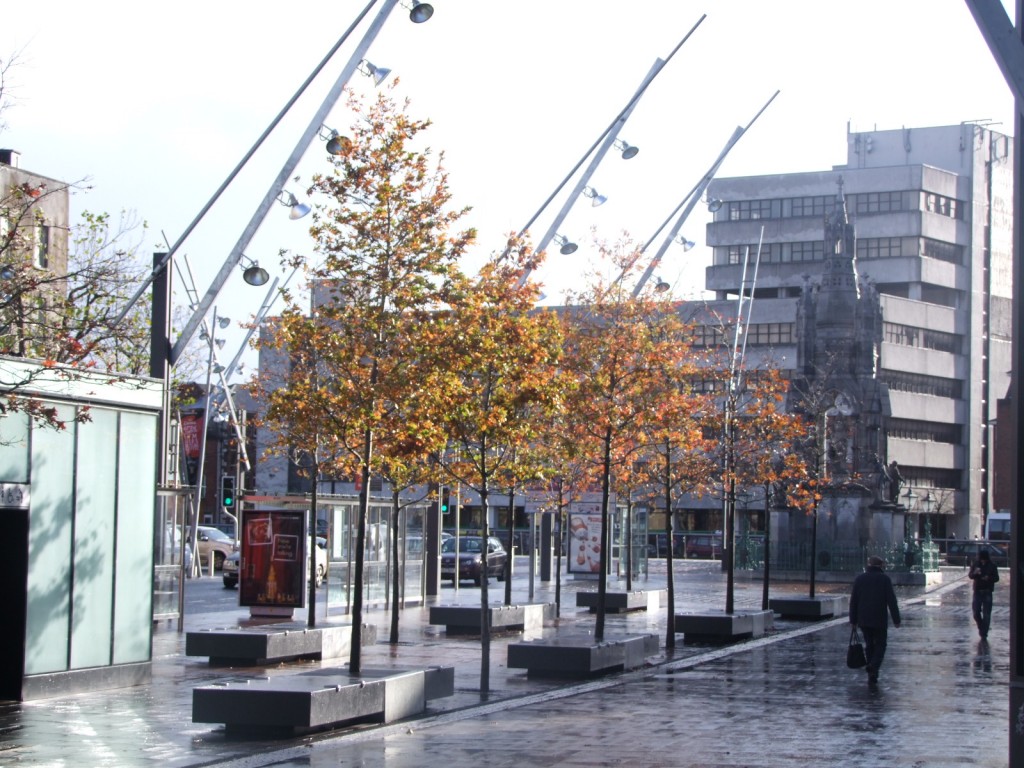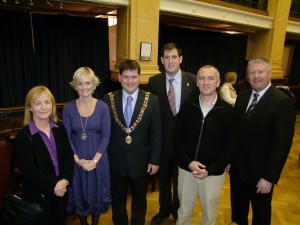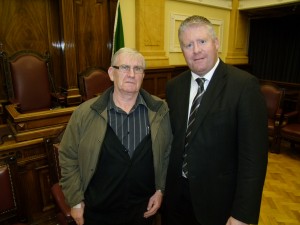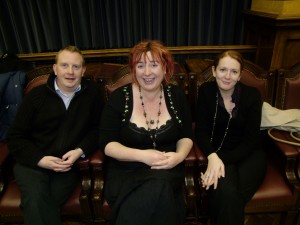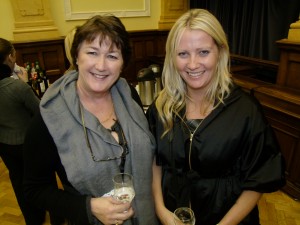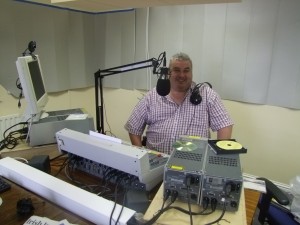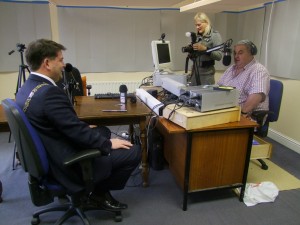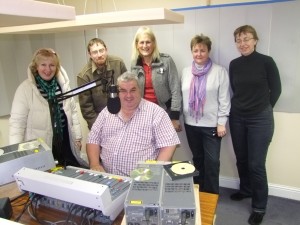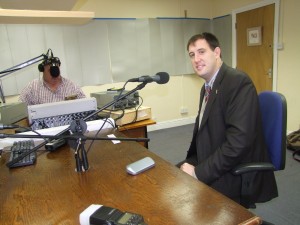Kieran’s article, “Pillars of Education”,
adapted from the memory section of the book,
Ri Connect, Colaiste Chriost Ri at 50 years old
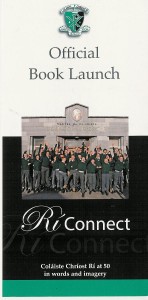 It’s amazing how all types of memories of your school days stay with you. I can remember my first day in Chríost Rí waiting in the yard and Mr. Tobin directing us to our first year rooms. But during all of my time in the school, Mr. Tobin was always the starter, the man who in a sense directed all our destinies at the start of each year. I was, like most others, anxious on the first day way back in September 1989. Finding my way around my new school was daunting. I was assigned to Naomh Ronán on the top floor and met my first form master Mr. Brett for the first time. I remember him writing his name across the board asking us to spell his name correctly on our copy books. And perhaps as this concerned teacher wrote on the board, he was writing himself into my own educational history in Chríost Rí as he taught me each year over the seven year period I attended the school. This caring teacher, apart from maths and physics, also taught us life traits. He believed in the principles of honesty, genuineness and hard work, traits I took away from those days and try to harness as best as possible in my own life today.
It’s amazing how all types of memories of your school days stay with you. I can remember my first day in Chríost Rí waiting in the yard and Mr. Tobin directing us to our first year rooms. But during all of my time in the school, Mr. Tobin was always the starter, the man who in a sense directed all our destinies at the start of each year. I was, like most others, anxious on the first day way back in September 1989. Finding my way around my new school was daunting. I was assigned to Naomh Ronán on the top floor and met my first form master Mr. Brett for the first time. I remember him writing his name across the board asking us to spell his name correctly on our copy books. And perhaps as this concerned teacher wrote on the board, he was writing himself into my own educational history in Chríost Rí as he taught me each year over the seven year period I attended the school. This caring teacher, apart from maths and physics, also taught us life traits. He believed in the principles of honesty, genuineness and hard work, traits I took away from those days and try to harness as best as possible in my own life today.
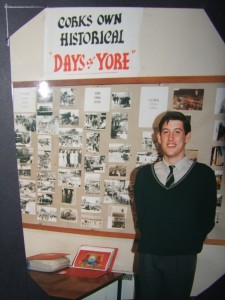 The educational foundation stones put into my young teenage life were significant. Looking back now, I enjoyed the craic and banter of Mr. Lankford’s Irish class as he gave us all a love for Irish culture and introduced many of us to Conradh na Gaeilge. Mr. O’Shea’s English class cultivated in me a love for drama and the arts as we acted out the plays on the Junior Cert course. Other teachers such as Br. Bosco gave me a love of science, equations and figuring things out. Mr. Crowley through Geography developed my early love for the world around me. I remember in third year we went on a fieldtrip to Ardnacrusha on the Shannon basin and my love of rivers began and my interest in their power and beauty. In later years, Mr. O’Leary brought my class out along the Lee on fieldwork and instilled in me a deeper love of physical geography. Many years later, I pursued geography a subject in my degree years in college. I also penned a book on Inniscarra Dam and many articles on the lovely River Lee in the Cork Independent.
The educational foundation stones put into my young teenage life were significant. Looking back now, I enjoyed the craic and banter of Mr. Lankford’s Irish class as he gave us all a love for Irish culture and introduced many of us to Conradh na Gaeilge. Mr. O’Shea’s English class cultivated in me a love for drama and the arts as we acted out the plays on the Junior Cert course. Other teachers such as Br. Bosco gave me a love of science, equations and figuring things out. Mr. Crowley through Geography developed my early love for the world around me. I remember in third year we went on a fieldtrip to Ardnacrusha on the Shannon basin and my love of rivers began and my interest in their power and beauty. In later years, Mr. O’Leary brought my class out along the Lee on fieldwork and instilled in me a deeper love of physical geography. Many years later, I pursued geography a subject in my degree years in college. I also penned a book on Inniscarra Dam and many articles on the lovely River Lee in the Cork Independent.
Mr. Desmond’s business sense stood to me well. “Always be business like” was his saying and now in the world of business those words re-echo in my life as my own consultancy business is up and running. In terms of the arts, Mr. Daly’s French class cultivated a love of other western European cultures and I know in later years my words of French that have stayed in my mind I try to use if abroad. Mr. Brennan’s music class brought not only a love of music but instilled in me a trait to always be creative, to explore other possibilities and to think outside of the box. I still have my music copybooks and his colourful remarks inside. There were many foundations put into me in those years but I have to say good solid work cultivated a great work ethic in me and a love in particular of the arts and culture.
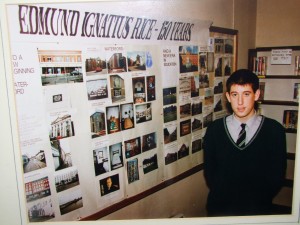 Perhaps when I entered Transition Year, I found my own niche through Mr. Carey’s history class as he taught us local history. Those stories I took into local primary schools on my job experience and began at an early to run my own walking tours across the city. My passion for Cork grew and continues to grow and blossom. In Leaving Cert years, I was given my first consultancy projects by Br. Walter and Mr. Power, two great men who gave me an opportunity to pen a project on the life of Edmund Rice and also encouraged me to put up my own photographic exhibitions on Cork long ago in the school library. A spirit of enterprise was built into me.
Perhaps when I entered Transition Year, I found my own niche through Mr. Carey’s history class as he taught us local history. Those stories I took into local primary schools on my job experience and began at an early to run my own walking tours across the city. My passion for Cork grew and continues to grow and blossom. In Leaving Cert years, I was given my first consultancy projects by Br. Walter and Mr. Power, two great men who gave me an opportunity to pen a project on the life of Edmund Rice and also encouraged me to put up my own photographic exhibitions on Cork long ago in the school library. A spirit of enterprise was built into me.
I also remember having to choose to return to Chríost Rí after my first Leaving Cert results wishing to get more points. But I recall the support of the then principal Mr. Corkery and his words to me that “everything happens for a reason”. How right this wise teacher was. My education in Colaiste Chríost Rí has stood to me. I push forward in life with my love for history, geography and the arts, my thirst for finding out more about the world I live in and my attempts to stay noble and honest, to work hard and to reach out as much as possible to others. For those traits and for others, I am eternally grateful.
